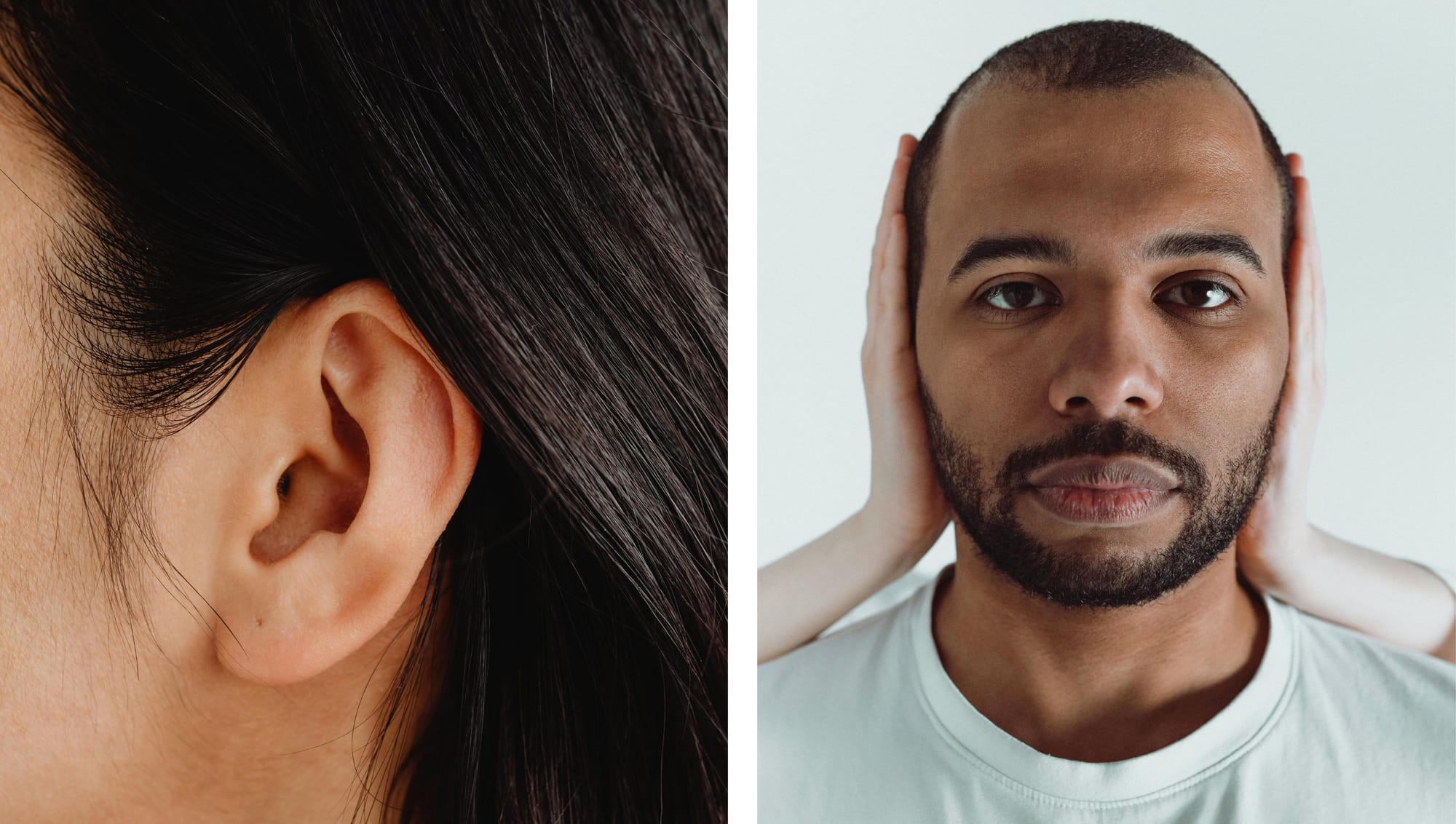Can Open-Ear Earbuds Be Used by Individuals with Hearing Impairments?
Open-ear earbuds, especially bone conduction models, can help individuals with certain hearing impairments by transmitting sound through vibrations.

Key Takeaways:
- Open-ear earbuds offer unique benefits for individuals with hearing impairments, providing a balance between sound quality and environmental awareness.
- Technological advancements in open-ear earbuds are making them increasingly accessible and beneficial for those with hearing challenges.
- Understanding the specific needs and preferences of individuals with hearing impairments is crucial in selecting the right open-ear earbuds.
Understanding Open-Ear Earbuds
Open-ear earbuds are a fascinating innovation in the audio world. Unlike traditional earbuds that sit inside the ear canal, open-ear models rest outside the ear, allowing ambient sounds to mix with the audio being played. This design is particularly beneficial for those who need to stay aware of their surroundings, such as joggers or cyclists. But what about individuals with hearing impairments? Can these earbuds serve their needs effectively?
The answer isn't as straightforward as one might think. Open-ear earbuds can indeed be a game-changer for some individuals with hearing impairments, but their effectiveness largely depends on the type and degree of hearing loss. For those with mild to moderate hearing impairments, these earbuds can provide a balanced listening experience, allowing them to enjoy music or podcasts while still being able to hear important environmental sounds.
The Science Behind Open-Ear Technology
The technology behind open-ear earbuds is quite intriguing. These devices often use bone conduction technology, which transmits sound vibrations through the bones of the skull directly to the inner ear. This method bypasses the eardrum, which can be advantageous for individuals with certain types of hearing impairments.
For example, someone with conductive hearing loss, where sound waves are blocked from reaching the inner ear, might find open-ear earbuds particularly useful. By bypassing the outer and middle ear, these earbuds can deliver sound directly to the cochlea, potentially improving the listening experience for those affected by this type of hearing loss.
Benefits of Open-Ear Earbuds for Hearing Impairments
One of the primary benefits of open-ear earbuds for individuals with hearing impairments is the ability to maintain environmental awareness. This feature is crucial for safety, especially in busy or potentially hazardous environments. For instance, someone with hearing impairments using open-ear earbuds can listen to their favorite tunes while still being able to hear a car horn or a pedestrian crossing signal.
Moreover, open-ear earbuds can be less intrusive than traditional hearing aids or earbuds. They offer a more comfortable fit for extended wear, which can be particularly beneficial for individuals who find traditional hearing aids uncomfortable or who experience ear fatigue from prolonged use.
Challenges and Limitations
Despite their benefits, open-ear earbuds are not without their challenges. One significant limitation is their sound quality, which may not be as rich or immersive as that of traditional earbuds. This can be a drawback for individuals who prioritize audio fidelity in their listening experience.
Additionally, open-ear earbuds might not be suitable for individuals with severe hearing impairments. The sound output may not be strong enough to compensate for significant hearing loss, and in such cases, traditional hearing aids or more specialized audio devices might be necessary.
Technological Advancements in Open-Ear Earbuds
The landscape of open-ear earbuds is rapidly evolving, with new technologies being developed to enhance their functionality and accessibility. For instance, some models now come equipped with advanced noise-cancellation features, which can help filter out unwanted background noise while still allowing important environmental sounds to be heard.
Furthermore, manufacturers are increasingly focusing on customization, offering earbuds that can be tailored to the specific hearing profiles of users. This personalization can make a significant difference for individuals with hearing impairments, ensuring that the earbuds provide the best possible listening experience.
Case Study: Open-Ear Earbuds in Action
Consider the case of Sarah, a 35-year-old woman with mild conductive hearing loss. Sarah was initially skeptical about using open-ear earbuds, fearing they wouldn't provide the sound quality she desired. However, after trying a pair equipped with bone conduction technology, she found that they offered a perfect balance between audio clarity and environmental awareness.
Sarah now uses her open-ear earbuds daily, whether she's commuting to work or taking a walk in the park. She appreciates the ability to enjoy her favorite podcasts while still being able to hear the world around her, enhancing both her safety and her listening experience.
Choosing the Right Open-Ear Earbuds
Selecting the right open-ear earbuds for individuals with hearing impairments involves considering several factors. First and foremost, it's essential to assess the type and degree of hearing loss. For those with mild to moderate impairments, open-ear earbuds can be a viable option, but individuals with more severe hearing loss may require additional amplification.
It's also important to consider the user's lifestyle and preferences. For example, someone who frequently engages in outdoor activities might prioritize earbuds with excellent environmental awareness, while someone who values sound quality might look for models with advanced audio features.
The Role of Audiologists
Audiologists play a crucial role in helping individuals with hearing impairments choose the right audio devices. They can provide valuable insights into the suitability of open-ear earbuds based on an individual's specific hearing profile. By conducting thorough assessments and offering personalized recommendations, audiologists can ensure that users get the most out of their audio devices.
Moreover, audiologists can assist in fine-tuning the settings of open-ear earbuds, ensuring that they deliver optimal sound quality and comfort. This professional guidance can make a significant difference in the overall listening experience for individuals with hearing impairments.
Real-World Applications
Open-ear earbuds are finding applications in various real-world scenarios, particularly for individuals with hearing impairments. For instance, they can be used in educational settings, allowing students to listen to lectures while still being able to hear their classmates and instructors.
In the workplace, open-ear earbuds can facilitate communication by enabling employees to participate in conference calls or listen to training materials without being isolated from their surroundings. This dual functionality can enhance productivity and collaboration, making open-ear earbuds a valuable tool in professional environments.
The Future of Open-Ear Earbuds
The future of open-ear earbuds looks promising, with ongoing advancements in technology and design. As manufacturers continue to innovate, we can expect to see even more features that cater to the needs of individuals with hearing impairments. From improved sound quality to enhanced customization options, the possibilities are endless.
Moreover, as awareness of the benefits of open-ear earbuds grows, we may see increased adoption among individuals with hearing impairments. This trend could lead to greater inclusivity and accessibility in the audio industry, ensuring that everyone can enjoy a high-quality listening experience.
Practical Tips for Using Open-Ear Earbuds
For individuals with hearing impairments considering open-ear earbuds, there are several practical tips to keep in mind. First, it's essential to try different models to find the one that best suits your needs and preferences. Many retailers offer trial periods, allowing you to test the earbuds in various environments before making a purchase.
Additionally, it's important to regularly clean and maintain your open-ear earbuds to ensure optimal performance. This includes wiping down the earbuds after use and storing them in a protective case when not in use. Proper care can extend the lifespan of your earbuds and ensure that they continue to deliver high-quality sound.
Common Misconceptions
There are several misconceptions surrounding open-ear earbuds and their suitability for individuals with hearing impairments. One common myth is that these earbuds are only suitable for those with mild hearing loss. While it's true that they may not be ideal for severe impairments, many individuals with moderate hearing loss can benefit from their unique design.
Another misconception is that open-ear earbuds are uncomfortable to wear for extended periods. In reality, many users find them more comfortable than traditional earbuds, as they don't exert pressure on the ear canal. This comfort can make a significant difference for individuals who wear audio devices for long periods.
Testimonials from Users
Many individuals with hearing impairments have shared positive experiences with open-ear earbuds. For example, John, a 42-year-old man with moderate hearing loss, describes his open-ear earbuds as a "lifesaver." He appreciates the ability to stay connected to his surroundings while enjoying his favorite music and podcasts.
Similarly, Lisa, a college student with mild hearing loss, finds her open-ear earbuds invaluable for studying. She can listen to recorded lectures while still being able to hear her roommates and participate in group discussions. These testimonials highlight the versatility and benefits of open-ear earbuds for individuals with hearing impairments.
Comparing Open-Ear Earbuds to Traditional Hearing Aids
When comparing open-ear earbuds to traditional hearing aids, it's important to consider the specific needs and preferences of the user. While hearing aids are designed to amplify sound and improve hearing, open-ear earbuds offer a different experience by allowing users to enjoy audio content while maintaining environmental awareness.
For some individuals, open-ear earbuds can complement traditional hearing aids, providing an additional option for listening to music or engaging in activities where situational awareness is crucial. However, for those with severe hearing impairments, hearing aids may still be the primary solution for improving hearing.
The Importance of Personalization
Personalization is key when it comes to selecting audio devices for individuals with hearing impairments. Open-ear earbuds that can be customized to the user's hearing profile can provide a more tailored listening experience, ensuring that the sound is optimized for their specific needs.
Manufacturers are increasingly offering personalization options, such as adjustable sound settings and customizable fit. These features can make a significant difference in the overall satisfaction and effectiveness of open-ear earbuds for individuals with hearing impairments.
Summary
Open-ear earbuds present a unique and promising option for individuals with hearing impairments. By offering a balance between sound quality and environmental awareness, these devices can enhance the listening experience for many users.
However, it's important to consider the specific needs and preferences of each individual when selecting open-ear earbuds, as their effectiveness can vary depending on the type and degree of hearing loss. When you get a chance click the button below to see which open-ear earbuds that we have selected that may help you!

